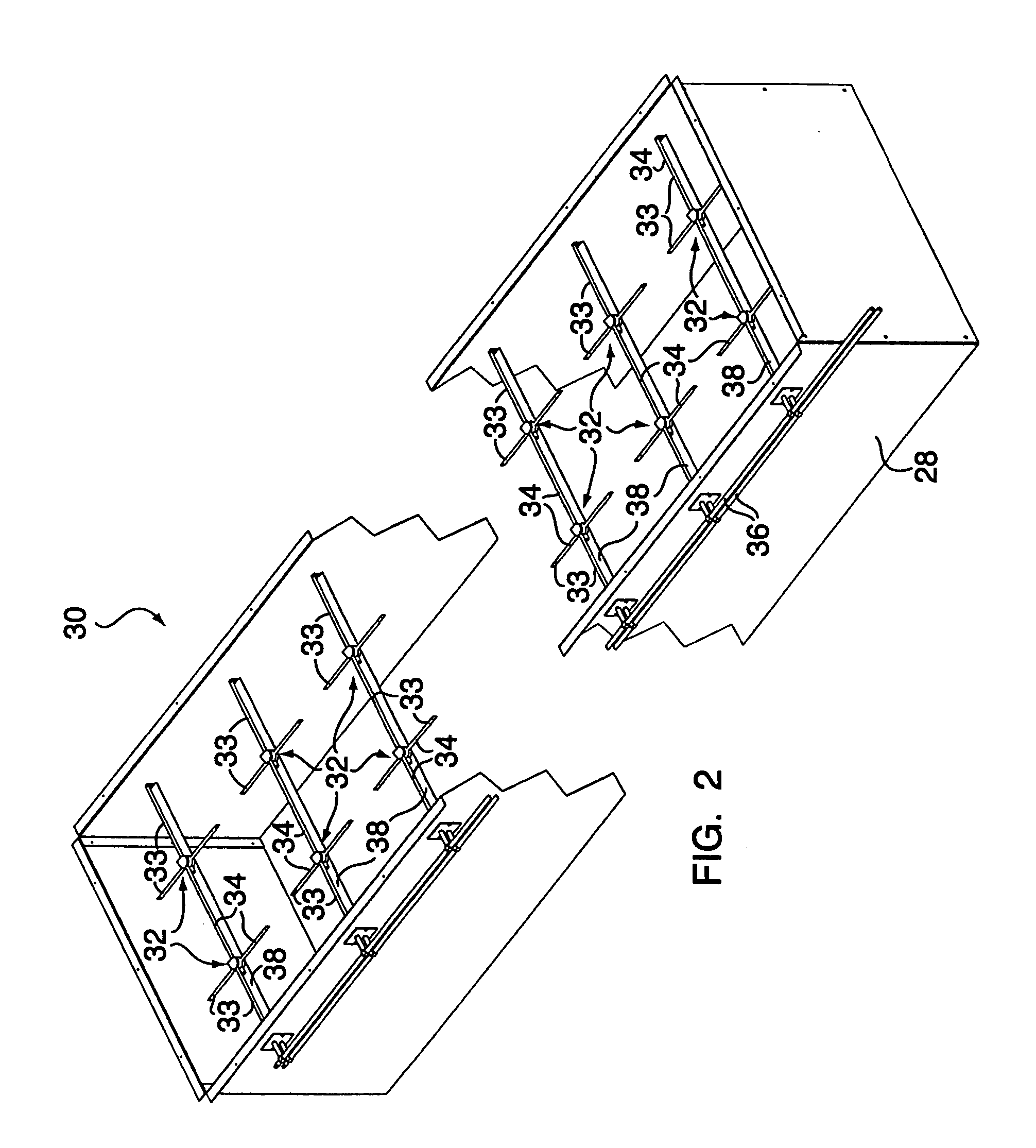Air circulation system
a circulation system and air technology, applied in ventilation systems, lighting and heating apparatus, heating types, etc., can solve the problems of miscalculation of the moving air mass, contamination concerns, and incorrect calculation of the air mass moving through each of the damper units, so as to restrict the build-up of combustion by-products, and effectively restrict the effect of combustion by-products
- Summary
- Abstract
- Description
- Claims
- Application Information
AI Technical Summary
Benefits of technology
Problems solved by technology
Method used
Image
Examples
Embodiment Construction
[0029]FIG. 1 is a schematic illustration of an air circulation system 10, according to one embodiment of the present invention. As shown in FIG. 1, the air circulation system 10 includes a controller 12, a heating unit 14 and a return damper apparatus 16. The heating unit 14 itself includes a gas valve 18, which selectively regulates the influx of fuel, typically hydrocarbon fuel or the like, to a burner component of the heating unit 14. In this regard, one function of the controller 12 is to control the operation of the gas valve 18, in accordance with either a manual input, automatic control, or in relation to pre-set operational parameters.
[0030]It will be readily appreciated that the controller 12 may be comprised of either a manual input keyboard and display screen, or an internalized computer and associated sub-routine, or both, without departing from the broader aspects of the present invention.
[0031]Returning to FIG. 1, an outside air-metering device 20 is utilized to provid...
PUM
 Login to View More
Login to View More Abstract
Description
Claims
Application Information
 Login to View More
Login to View More - R&D
- Intellectual Property
- Life Sciences
- Materials
- Tech Scout
- Unparalleled Data Quality
- Higher Quality Content
- 60% Fewer Hallucinations
Browse by: Latest US Patents, China's latest patents, Technical Efficacy Thesaurus, Application Domain, Technology Topic, Popular Technical Reports.
© 2025 PatSnap. All rights reserved.Legal|Privacy policy|Modern Slavery Act Transparency Statement|Sitemap|About US| Contact US: help@patsnap.com



